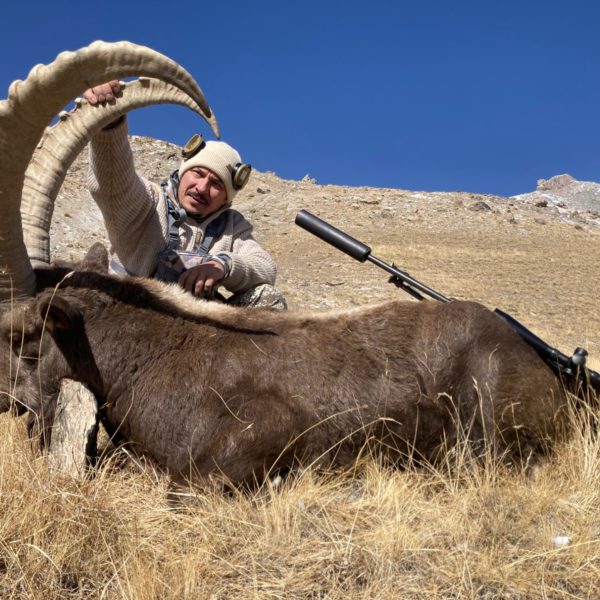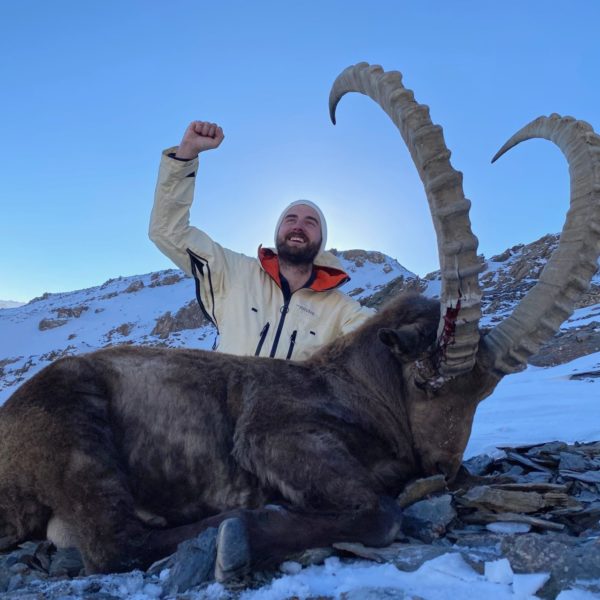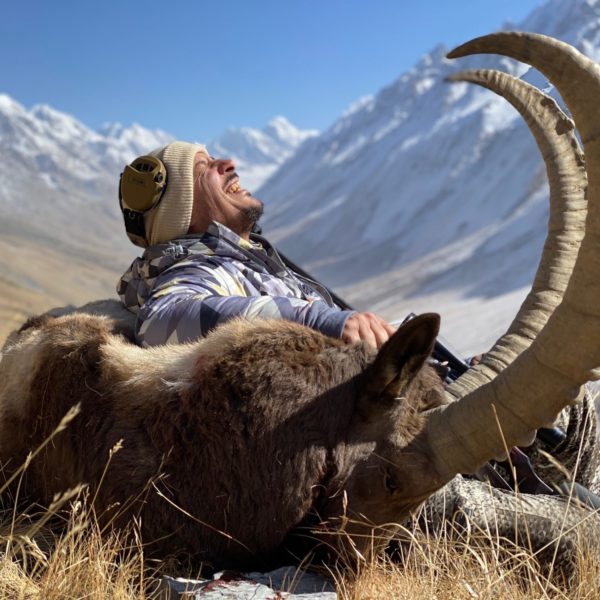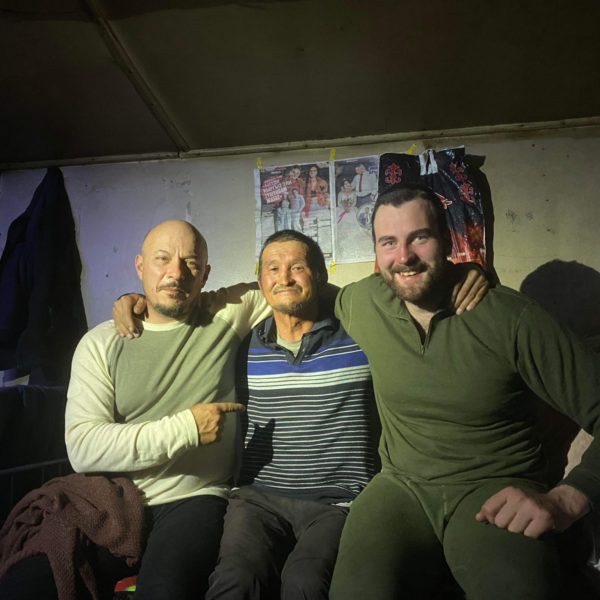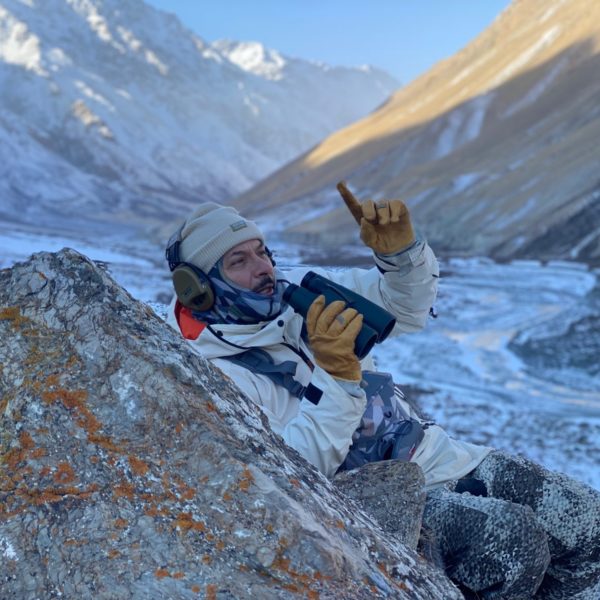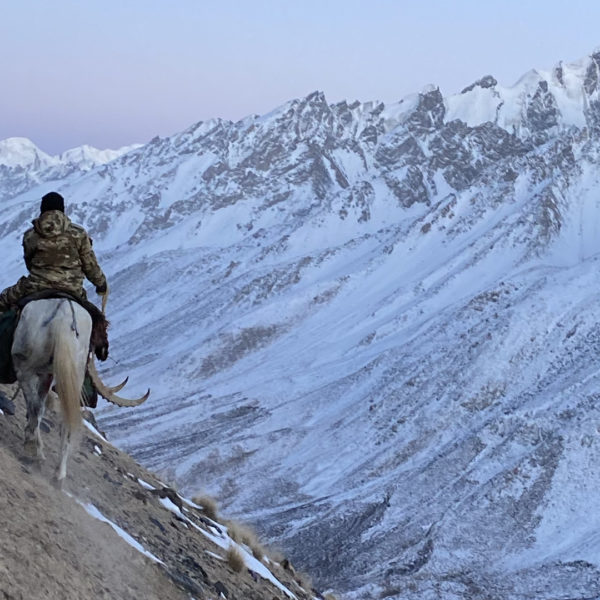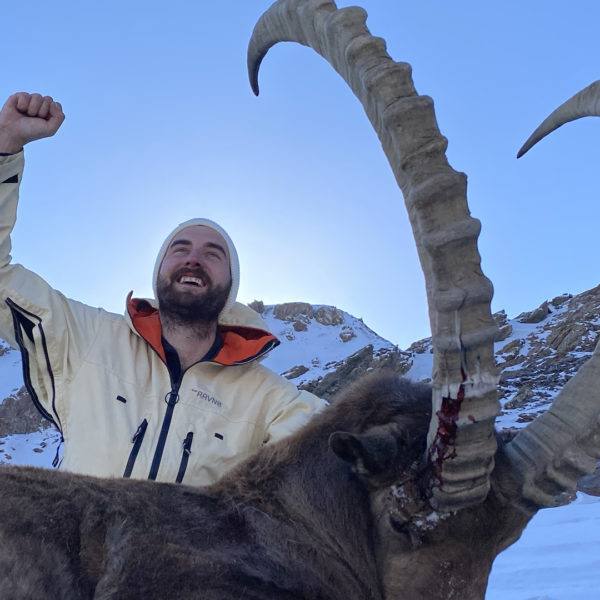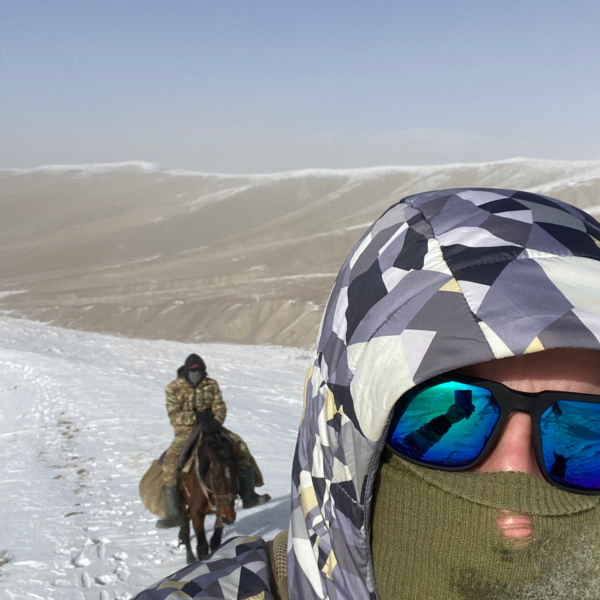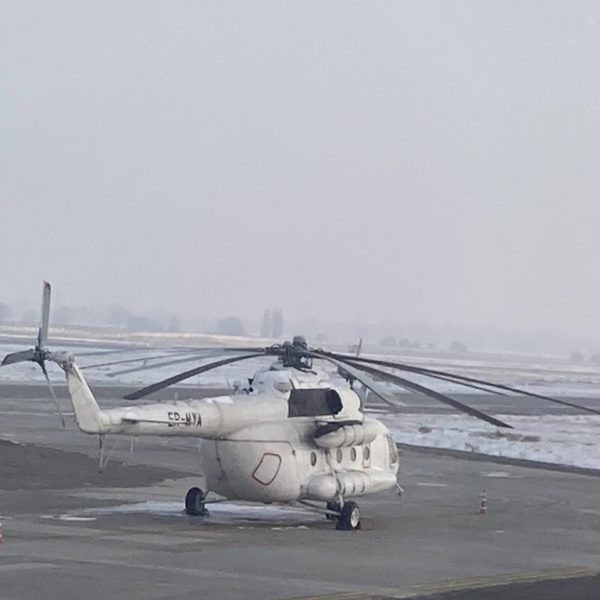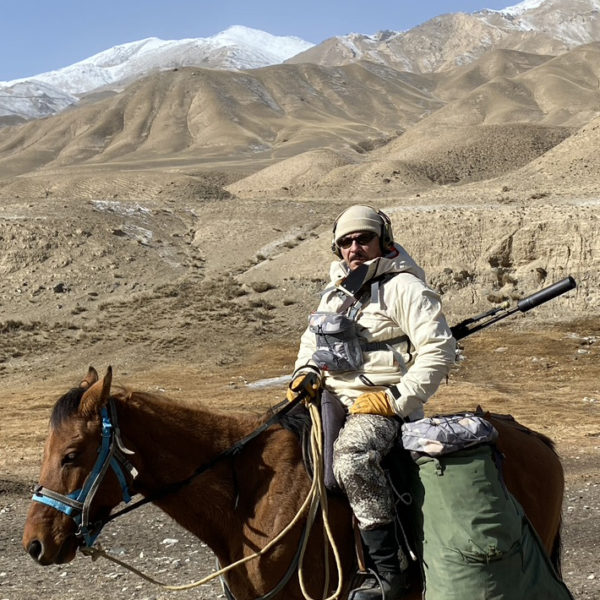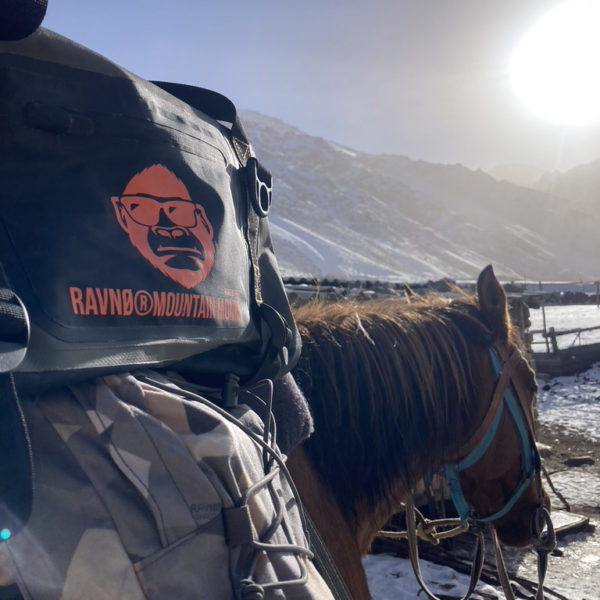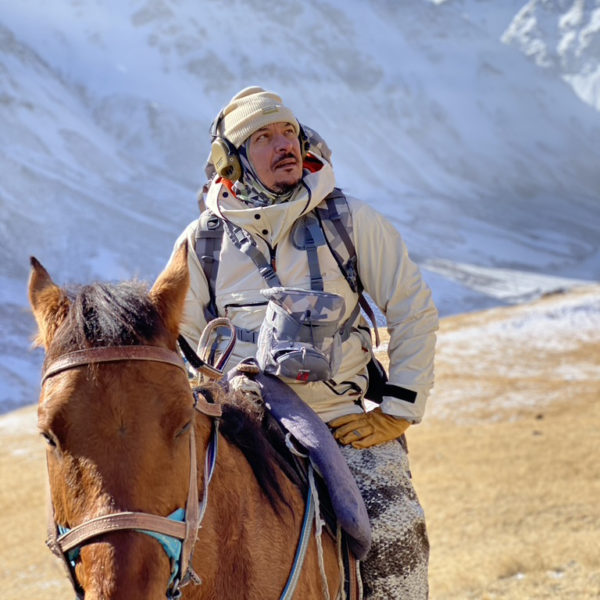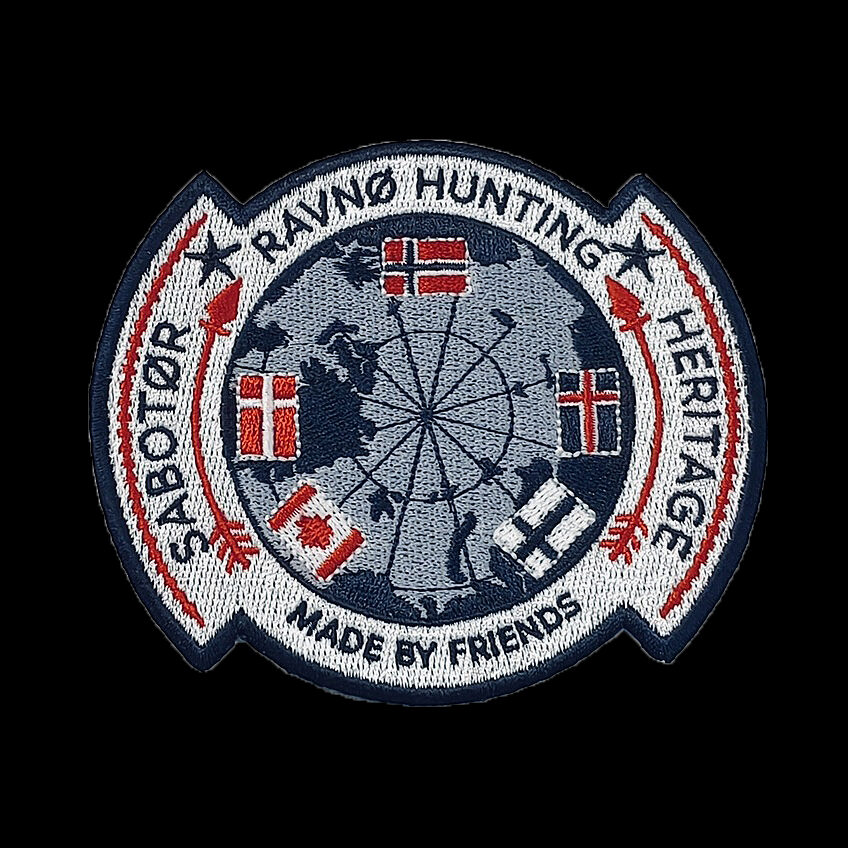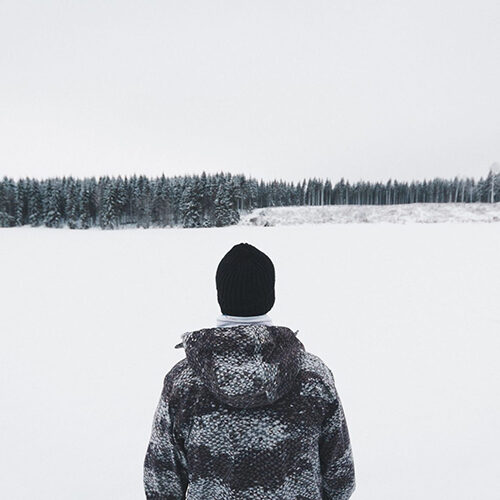– As-salamu alaykum, shouts the shepherd. – Wa alaikum as-salam, my friend.
Tian Shan, or the Tian Mountains, is a mountain range in Central Asia, north of the Taklamakan Desert. It lies in the border areas between Kazakhstan, Kyrgyzstan, and China. We, like many before us, ventured into these mountains in search of Ibex.
The shepherd is 54 years old, proudly stating that he lives in his cabin all year round except for January. From here, he watches over his herds and carries out his daily work. His day is long, consisting of moving the herds twice a day. He rolls tobacco in old newspaper and lights up his twentieth cigarette of the day. “Last night, a wolf came down here,” he says. “It stood right behind the hut. It comes here often. But I don’t have a weapon, so I can’t chase it away. And then there’s a panther (snow leopard) that lives up in the mountains here. But you need 50 million to shoot it. It takes a lot of sheep.”
This is his everyday life, and I can’t help but wonder at how content he appears. He has laid out everything he owns around the low table in the middle of the floor. There’s a bit of rice, noodles, tea, and tobacco. It’s not much, but he is proud. Our guides lay out everything we have brought with us. It must seem like an abundance to this shepherd. He doesn’t have many visitors during the season, he says, we are the other “travelers from afar” who have come here this season.
“Have you seen any large ibex lately?” I ask.
“Ibex? They are everywhere,” he says. “They are all big.”
Clearly, he doesn’t understand these tourists, but he seems satisfied to have us there.
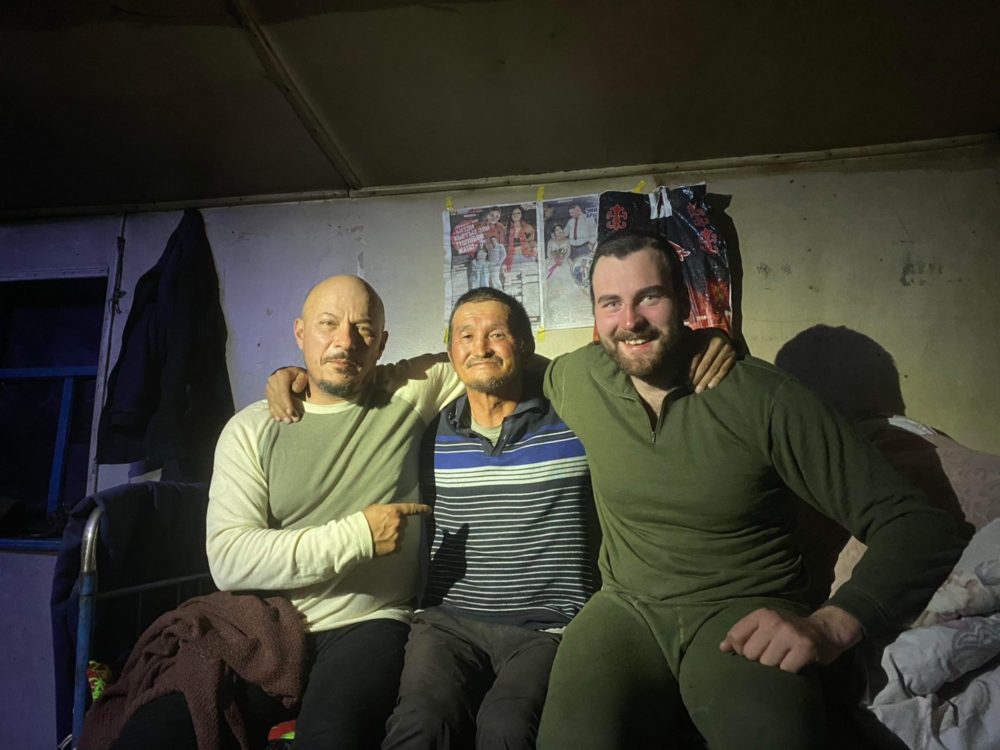
It has been three days since we left Oslo – the final leg on horseback is where the sense of adventure began. Both August and I have hunted in many parts of the world before, but we are not exactly spoiled with central Asian ibex. For this occasion, we have split into two groups: August will hunt in a valley south of us, towards the Chinese border. They will spend the nights camping in tents, while I will have the pleasure of staying in the cabin here and hunting near Kyrgyzstan’s highest mountain, Pobeda.
Watch the film on Vimeo here.
Many thoughts have crossed my mind during the first days of the trip, as well as afterwards. Should I write about this, or should I tell a travel account of how we managed to outsmart a remarkably large ibex? How and why I chose the one slightly smaller but stronger at the base over the even bigger one. I could also write about a wounded ibex – lost not due to a lack of tracking, but simply because it made its way to a cliff where no sane person ventures. The park guide suggests that $100 would make it as if it never happened – and we could continue hunting. But no, August is a young man with a moral compass rooted in a hunter’s upbringing. He wants nothing to do with that. Lost is lost, it’s an offering to the gods, and out comes the wallet to buy another tag.
My thoughts turned to Africa, where I lived for 17 years and did quite a bit of hunting. I remember how I too argued that these funds were important to maintain diversity, create opportunities, and generate income among the locals and those who sacrifice the most to have wildlife in their neighborhood – instead of cattle or goats. It’s an argument no one can take away from us; it is morally superior. But here, tens of thousands of dollars later, I feel a hint of distaste in my mouth. The guides, who worked tirelessly around the clock, tell me they received $50 for the season. Fifty damn dollars! That’s the price of ten of my cartridges. And the cook? Yes, she also received $50. She had been in Base Camp the entire season, 35 days, while her 16-month-old daughter stayed with the neighbor.
That’s the harsh reality. There is still a long way to go before the “Campfire model” potentially functions in Kyrgyzstan as it does in most places in Africa today. I had to come to terms with the fact that most of the money we paid went into the pockets of agents, more agents, and quite a few semi-corrupt officials. But it’s still better than nothing.
Fifty dollars, Bacha? For an entire season? Are you happy with that?
The average income in Kyrgyzstan over the course of a year is around $250, excluding the capital, Bishkek. So yes, Bacha, cook Samira, and the other guides were happy. This was a dream job for them. Besides, the Camp Boss was cool, allowing them to take meat and providing them with clothes and equipment if needed. It’s also clear that they benefited from the guests. Americans loved giving away binocular bags and basic gear. Germans, Hungarians, and Russians were the best; they left behind Swarovski optics – binoculars, spotting scopes – and money.
August has worked as a guide in British Columbia and New Zealand. He says they relied on tips – but it had to be ten percent of the trip’s value. Stone sheep hunting was the best; fifty thousand dollars for the hunt resulted in generous tips for the guides. Africa was different. As a professional hunter (PH), the government set the minimum daily rate in Botswana in the ’80s and early ’90s. It wasn’t the outfitters, and that money was earmarked for the villages where you hunted.
There is a long way to go in Kyrgyzstan before reaching that point.
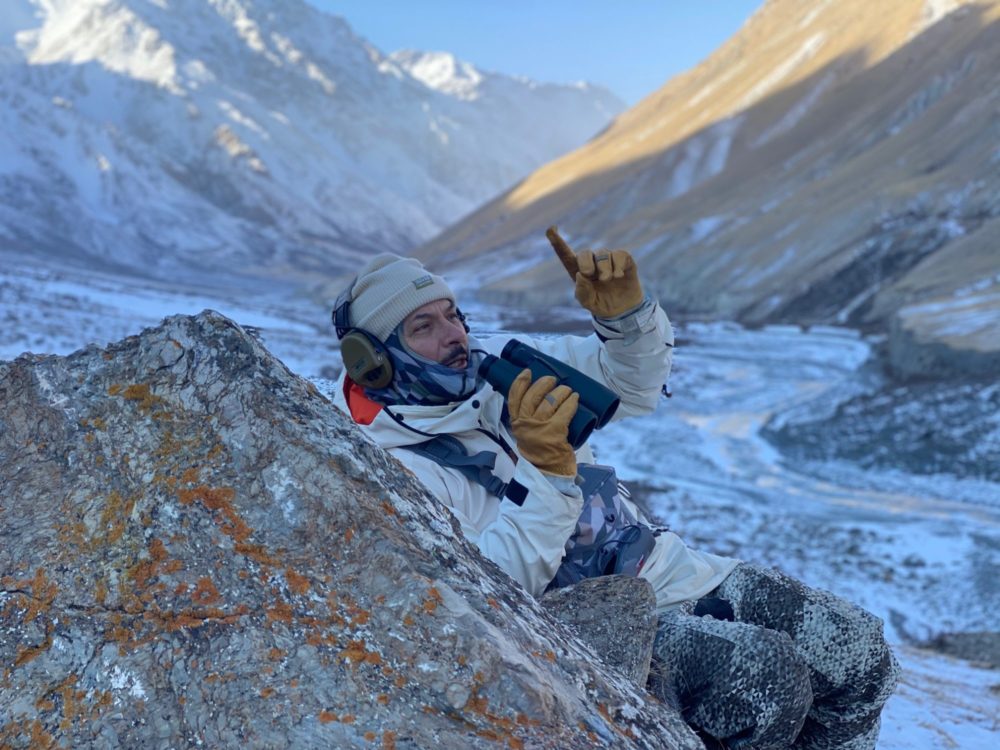
The time was surely no later than five in the morning when I stood outside the hut, scanning the mountains. The guide was already up, keeping an eye on the mountainsides further down the valley, while the wrangler slept off yesterday’s vodka binge. There were plenty of ibex. Young ones and females scattered evenly across the lower areas. But then we saw him. Right at the top, up there beneath the horizon, he lay. This was an ibex over 130 cm, and that’s big. He had a small entourage with him. All of them well over a meter. The guide seemed eager; this was some of the best he had seen all year.
We settled into the hut and had breakfast. I was mostly focused on getting as much fluid in me as possible. Here I was, someone who normally lives five meters above sea level, fifty in the body, and twenty-two at the peak – I knew this was going to be brutal.
We set off on the horses. A kilometer further down the valley, we plotted the animals on our binoculars, creating a mental image of the terrain they were in and how we would approach. We knew that once we crossed to the same side of the valley as the animals, we would lose sight of them for several hours. It was a chance.
Central Asian horses could have surely challenged the ibexes in climbing skills. These small horses clawed their way up the slopes, eventually reaching heights of 4,500 meters. The air was thin up there. When we finally reached the snow line, it was time to prepare. “Last chance to interview yourself on video,” the guide said. I had to smile. Alright, then the wrangler will handle the filming. I will hunt. I will savor this moment.
There is one advantage to being fifty. No one expects you to run in such mountains, so I set the pace. It was going to be slow. Slowly, we started inching forward, losing altitude, moving about a kilometer. Ahead of us were some large boulders. They were our goal. To reach them unseen and unheard. If we could accomplish that, we would be within the kill zone – if the ibex was still there. I can promise you that the guide has never approached an animal so slowly.
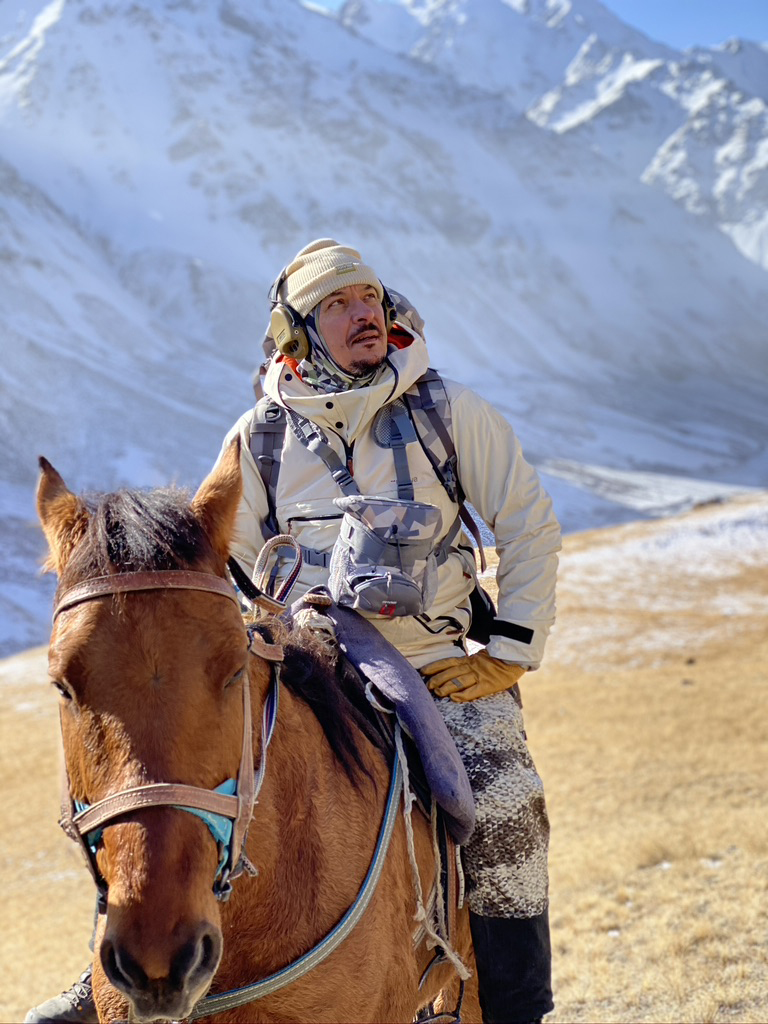
We sat and waited. After perhaps two hours, a solitary animal stood up. We hadn’t seen him properly before he got up. He walked calmly a few meters uphill, grazed a bit, and lay back down. “Very Very Big Ibex,” said the guide. I understood what he meant. It wasn’t the length that impressed with this animal, but the weight of its horn. It was twice as thick as the others. “This Ibex,” said the guide, “maybe 110 cm, but very strong.” He could have said 85 cm, and I would have already made up my mind. “Should we wait for the animals to stand up so you might have a chance at the big one?” No. I was comfortable with the situation. I had a good rest, “my” ibex lay alone five meters to the side of the others, and besides, he was lying with his back turned. In my sights, I had the entire spine and neck perfectly aligned from 1 mildot up to 1 mildot down from the center.
The shot hit where it was supposed to. The animal fell over on its side without the slightest resistance. His group of companions jumped up, looked around, and eventually started walking calmly towards us before climbing over the horizon. It was a fantastically big ibex that got to live on. The guide had tears in his eyes. He hugged me and said, “You are a hunter!” It’s incredible how proud one can feel to hear something like that even after many years of hunting. He said a prayer, and then we sat down together, opened a bottle of vodka, brewed tea, ate, and retold each other what we had just experienced.
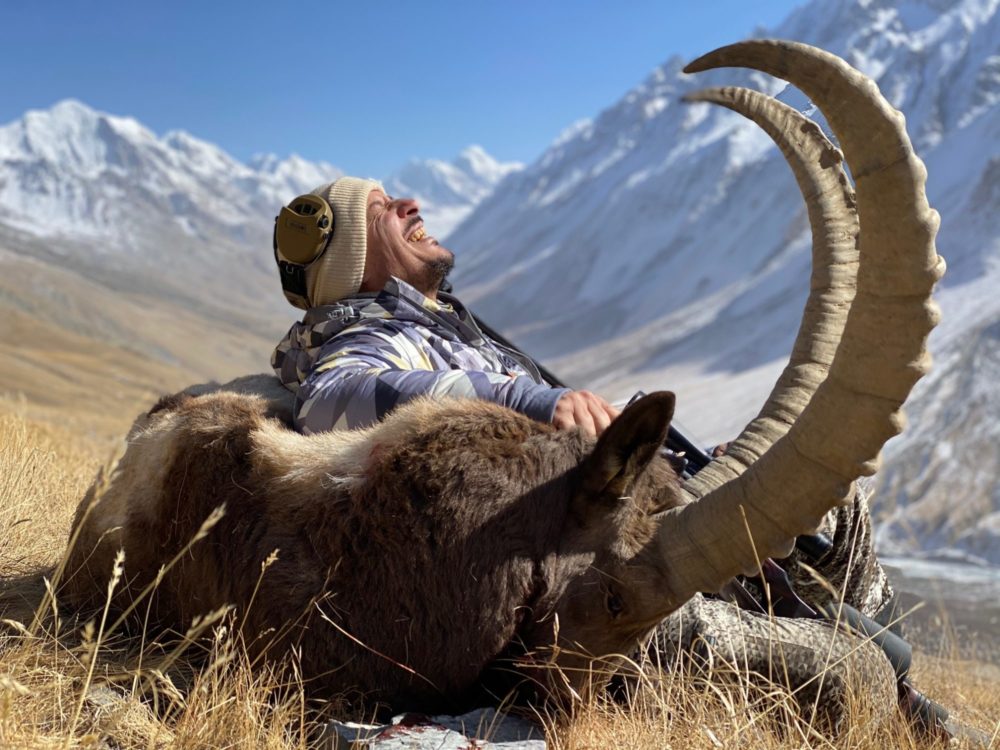
August gets revenge.
The Golden Rule of Goats (and Sheep):
Under no circumstances use any caliber smaller than, .300 WinMag. Always use a Magnum calibre – and if you haven’t got one, buy one!
August’s .308 Blaser rifle was left back at the camp. August is a very skilled shooter, so the challenge doesn’t lie there. After all, the magnum rifle is going to rearrange the goat’s ribcage to a much greater extent.
Up towards the highest point, there, we find a new group of big ibex. We’ve taken the horses up the river valley for a kilometer or two, and now we see them. Plans are made, but here I have to use my judgment, I won’t accompany August on this, he has to go with the guides himself. After all, he is 26 years old and fit as a chamois. I’ll only create noise and stress.
They set off. This is where the wrangler gets a chance. It’s not often he’s experienced a hunter from afar outpacing him in the mountains. The guide and August reach the animals first. The situation was difficult; they managed to get within about 250 meters, but it was not possible to get any closer without being detected. There was a ridge between them and the chosen ibex. The first shot is fired, hitting just at the top of the slope before the animal and veering high into the shoulder. Like the starting shot in a race, the animals scatter. The objective is to get in more shots. The second shot is at 330 meters and the third at 440 meters as the animals disappear over the horizon. The second shot hit low in the paunch, and the third was likely a miss. It’s not difficult to imagine what went through my friend’s mind. To experience the same thing as the previous day, a wounded and lost ibex, must have filled him with both fear and many anxious thoughts. There’s some discussion back and forth; some think he missed. But no, he’s certain he didn’t. August pushes them forward, saying, “We’re going up there to look for blood!” On the horizon where the animals crossed the mountain and continued inward, there are clear signs of hits. He urges them on. The guide accompanies him. After a while, the guide shushes him and points, there it is, about 1,000 meters further up. To reach it, they have to descend a bit and then move further inward. They start. It takes them three hours to reach the next mountain. In the meantime, the wounded ibex has heard them, and slowly but surely, it has started moving upward. When they spot it again, they have a chance. August has to climb out onto a cliff, it’s a straight drop, so the guide sits on his legs to prevent him from falling off the cliff. “How far?” “673 meters,” says the guide. A well-zeroed mildot reticle is perfect in such situations. 1.5 mildots up. First shot, miss. Second shot, the ibex falls perfectly with a precise hit in the shoulder.
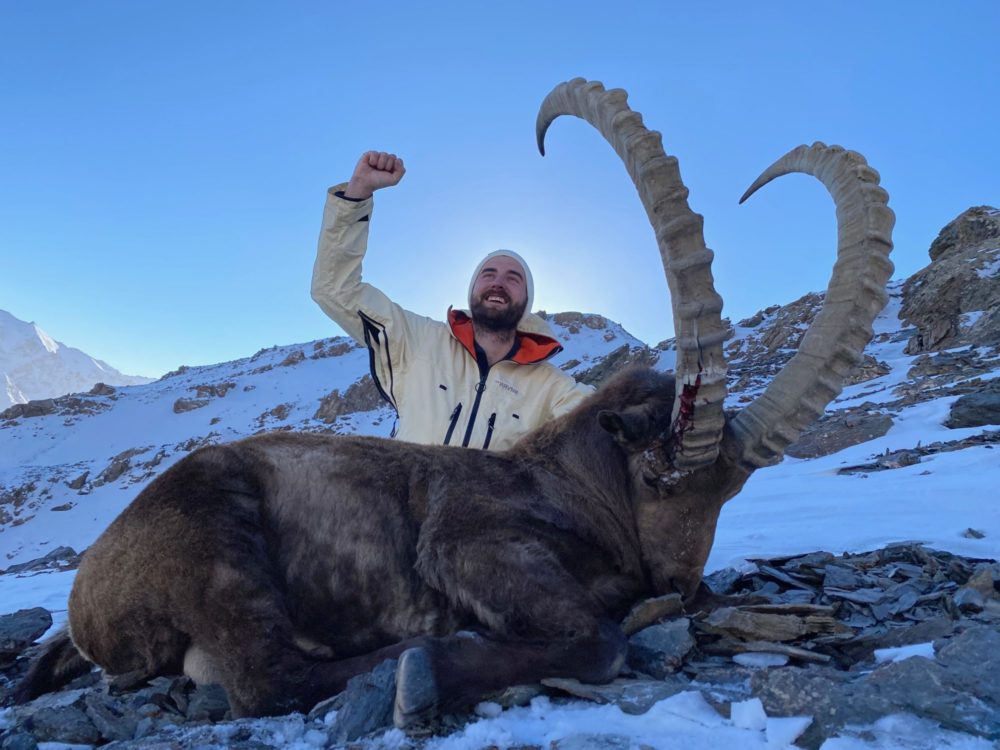
Travel to Kyrgyzstan! If you’re adventurous, this is a fantastic destination. The hunt can be challenging, but here you can largely plan your own course. Bishkek is just a stone’s throw away. There’s little to gain there except for hostile looks and sharp comments in Russian. In the mountains, however, where people are as unfamiliar with the Nordic countries as they are with the capital of their own country, they are incredibly friendly. You will experience a landscape, people, and a hunt that you will remember for a long time. This is an adventure that stays with you until you’re in the grave.
Marek’s tips:
Bring a magnum caliber rifle with a lightweight mildot reticle zeroed at least 300 meters.
Norma BondStrike bullets have exceptional Ballistic Coefficient (0.6) and superior long-range performance.
Take along a spotting scope and a good pair of binoculars—and give them to the guide if they don’t have them already.
Give the cook tips from another world—they deserve it. They work so much for so little. Be generous!
Stay positive. The guides are attentive to whether you’re struggling or feeling uncomfortable—keep your spirits up even when it’s tough. It makes their job easier.
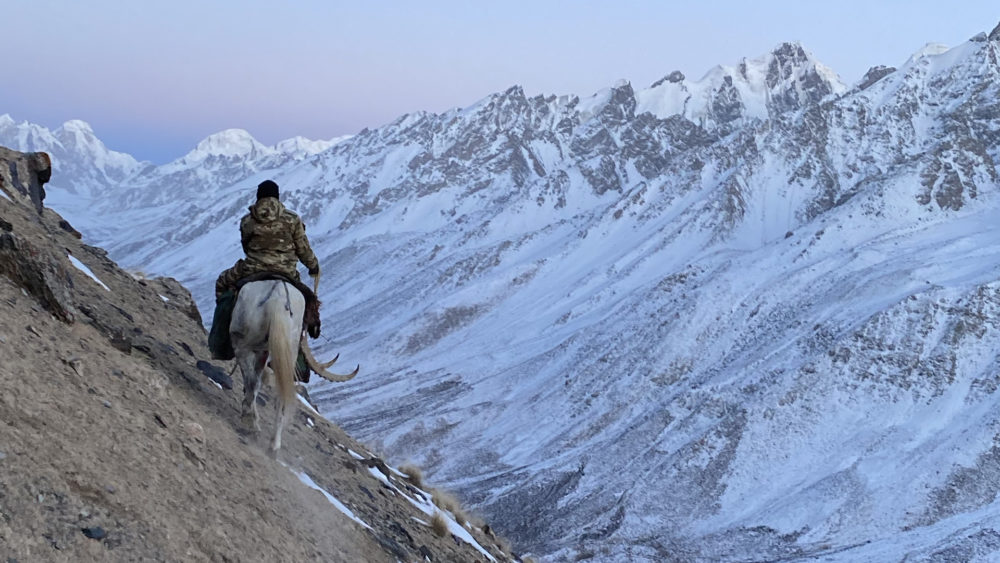
Other stories:
Africa, 1979. Here.
King of the hunt. Here.
